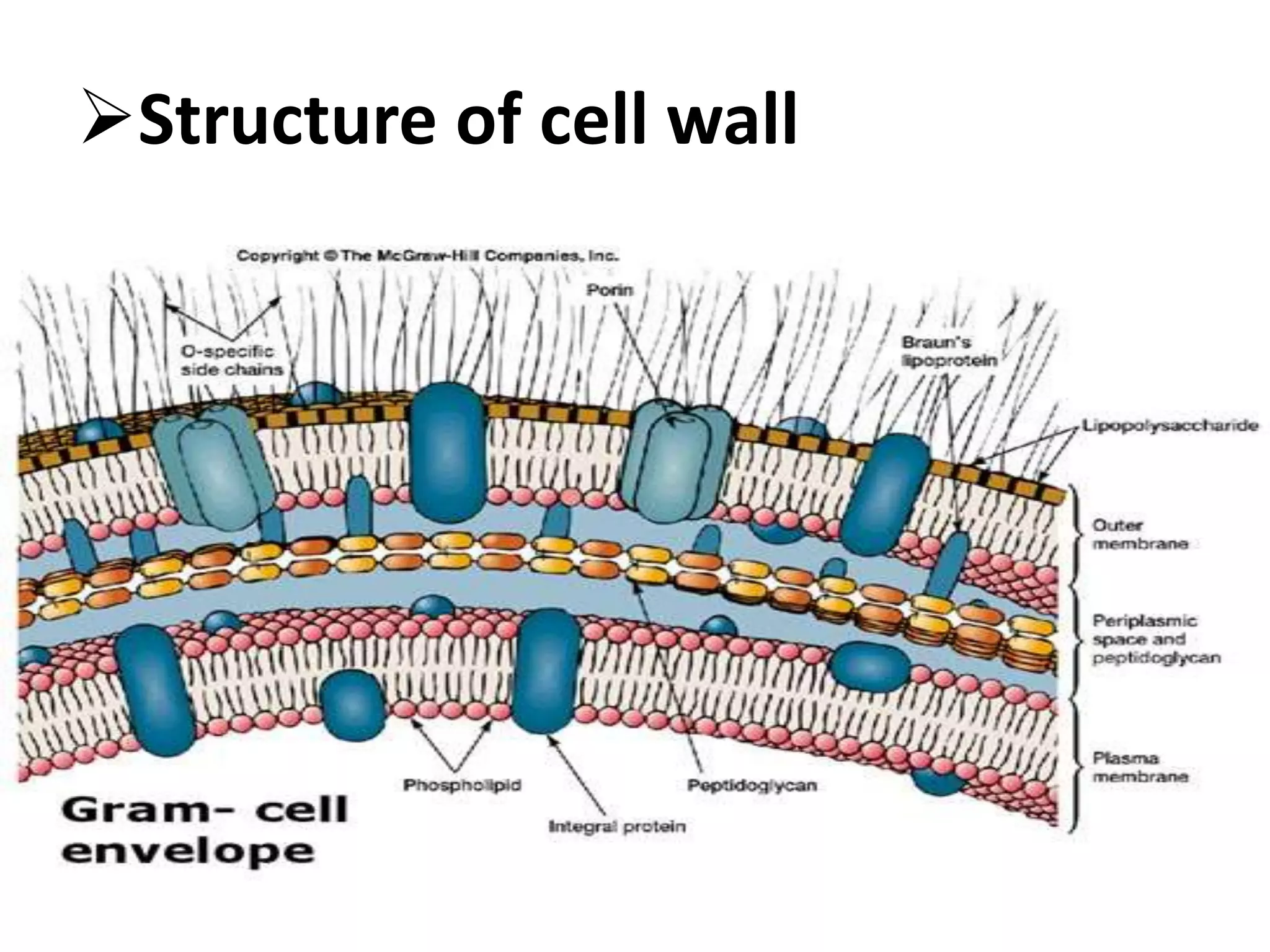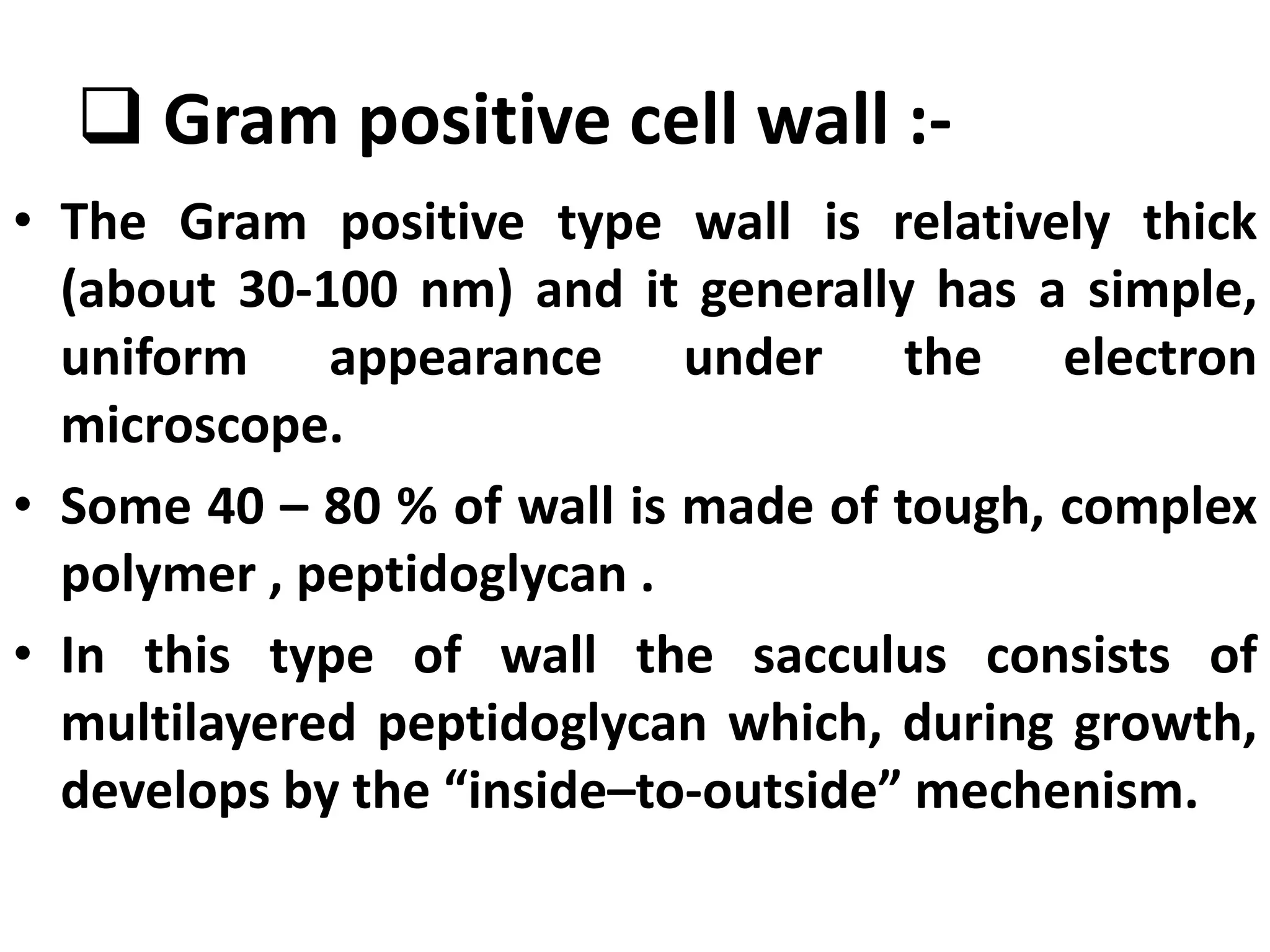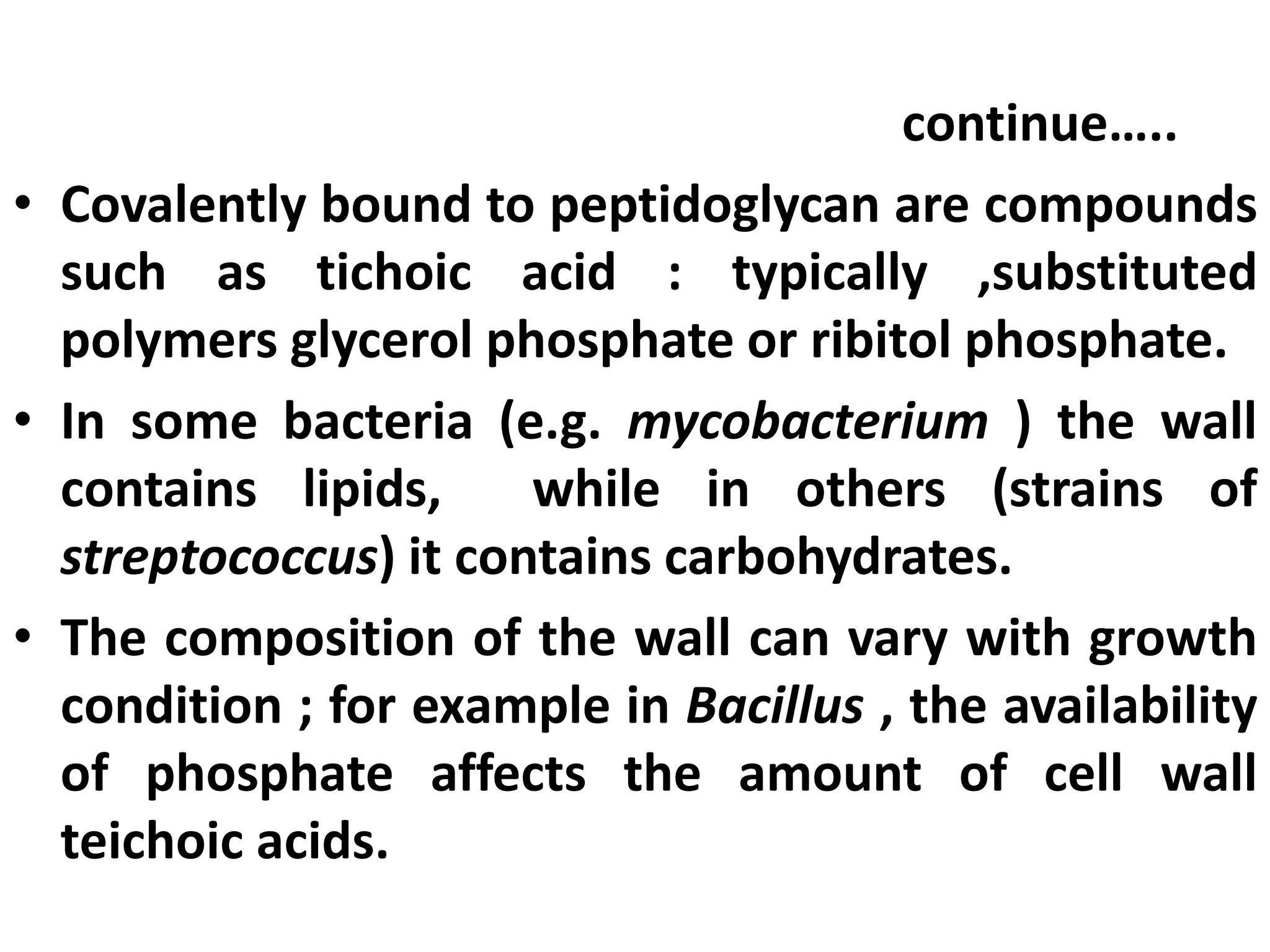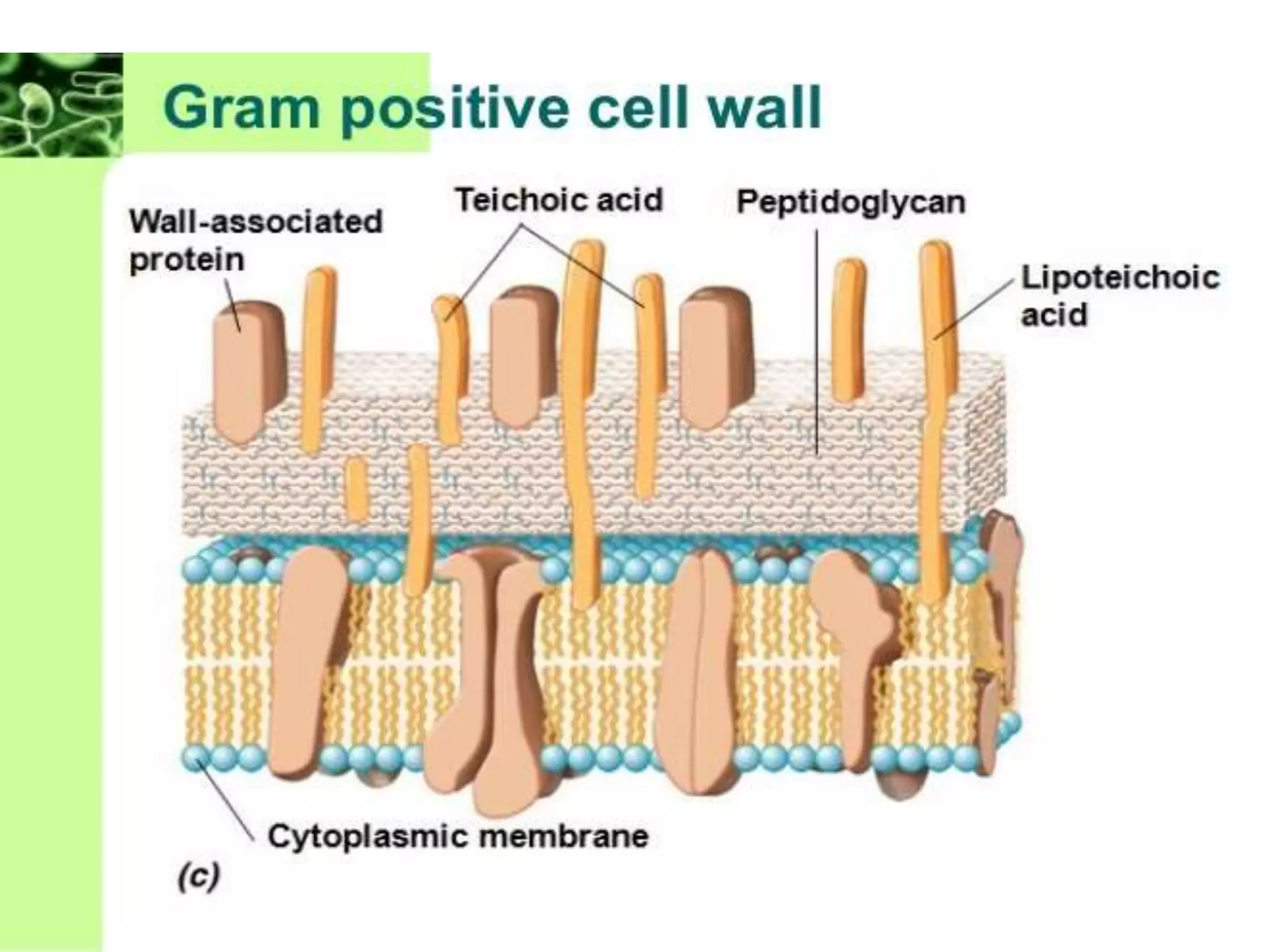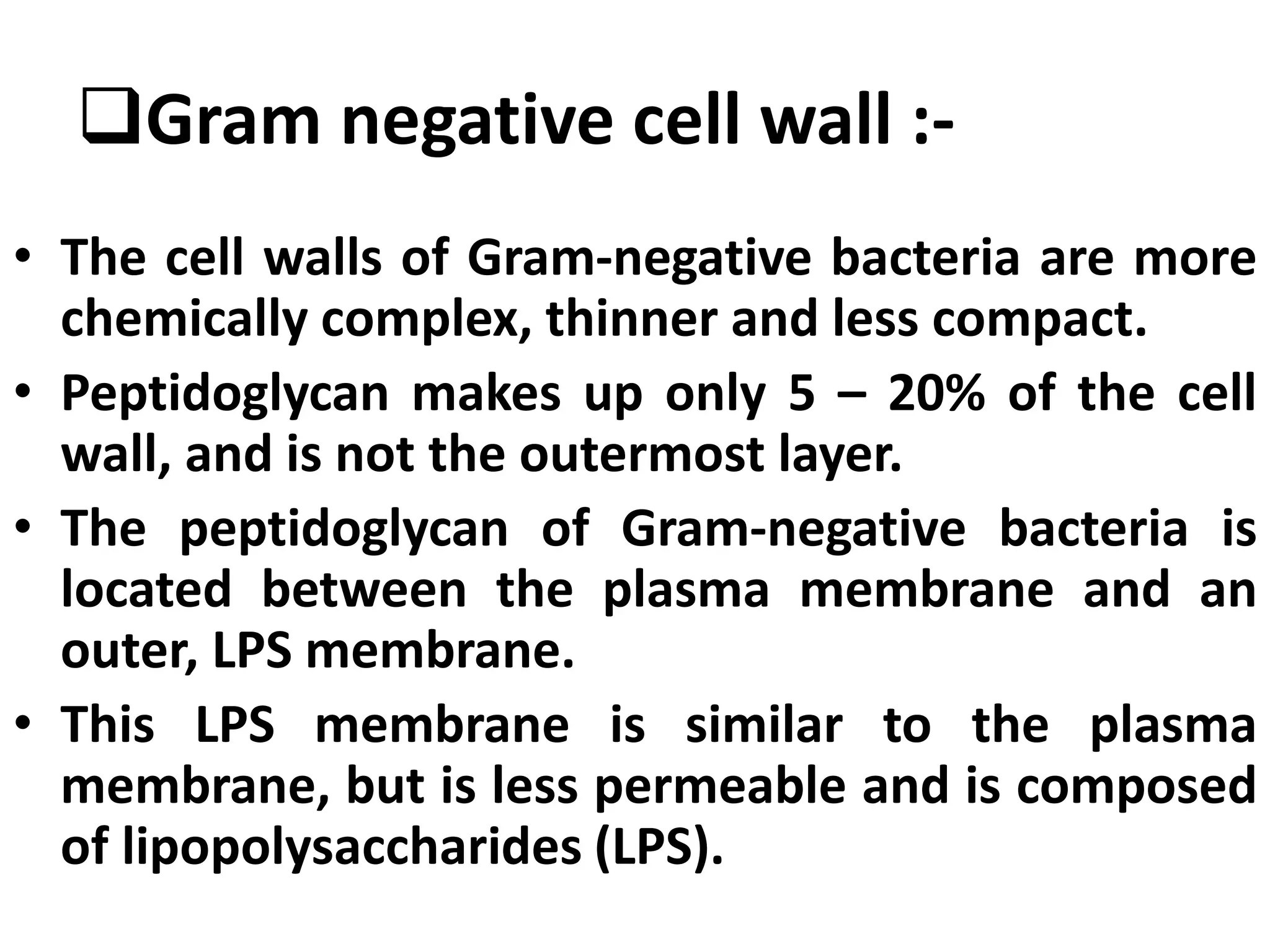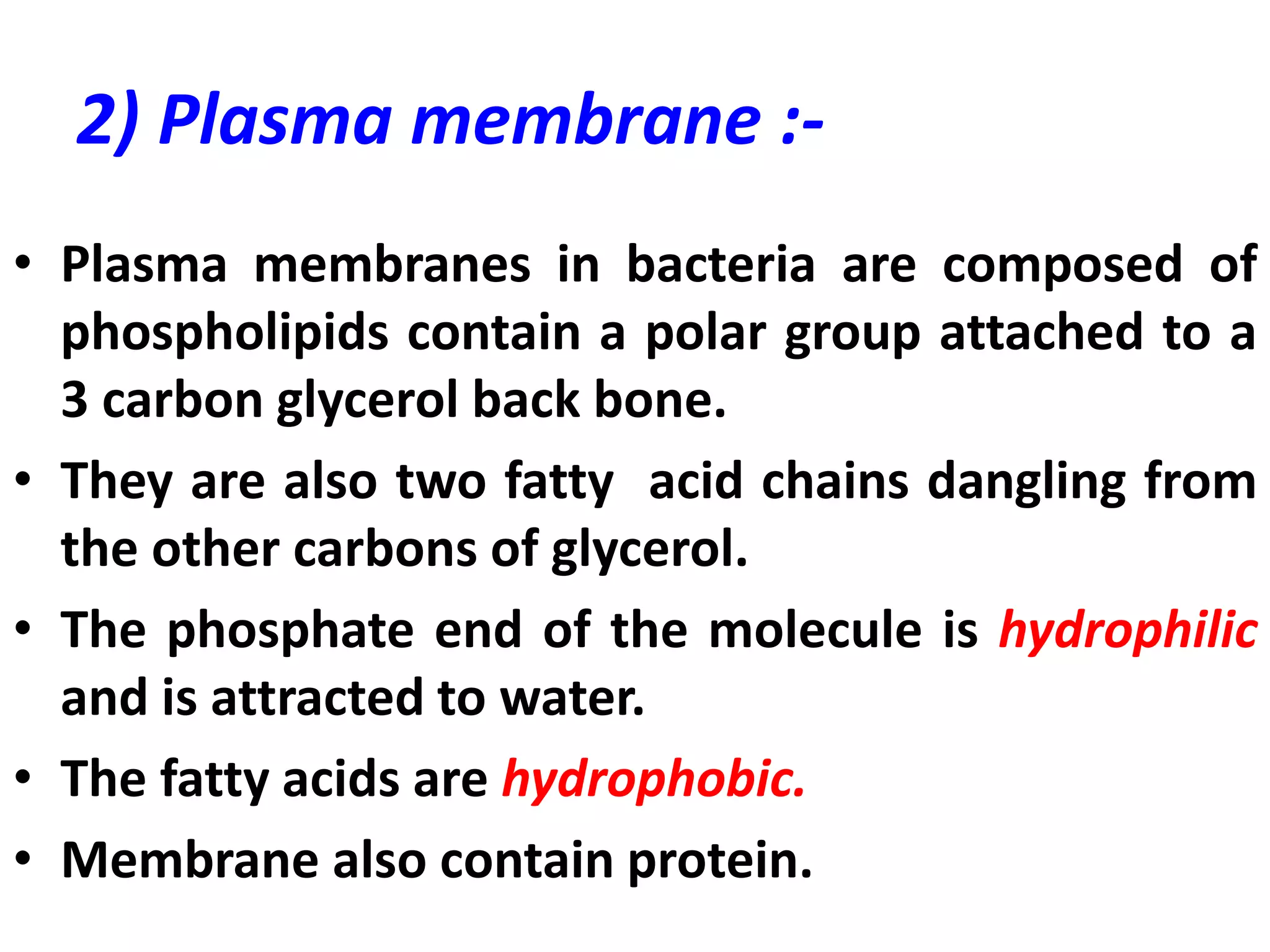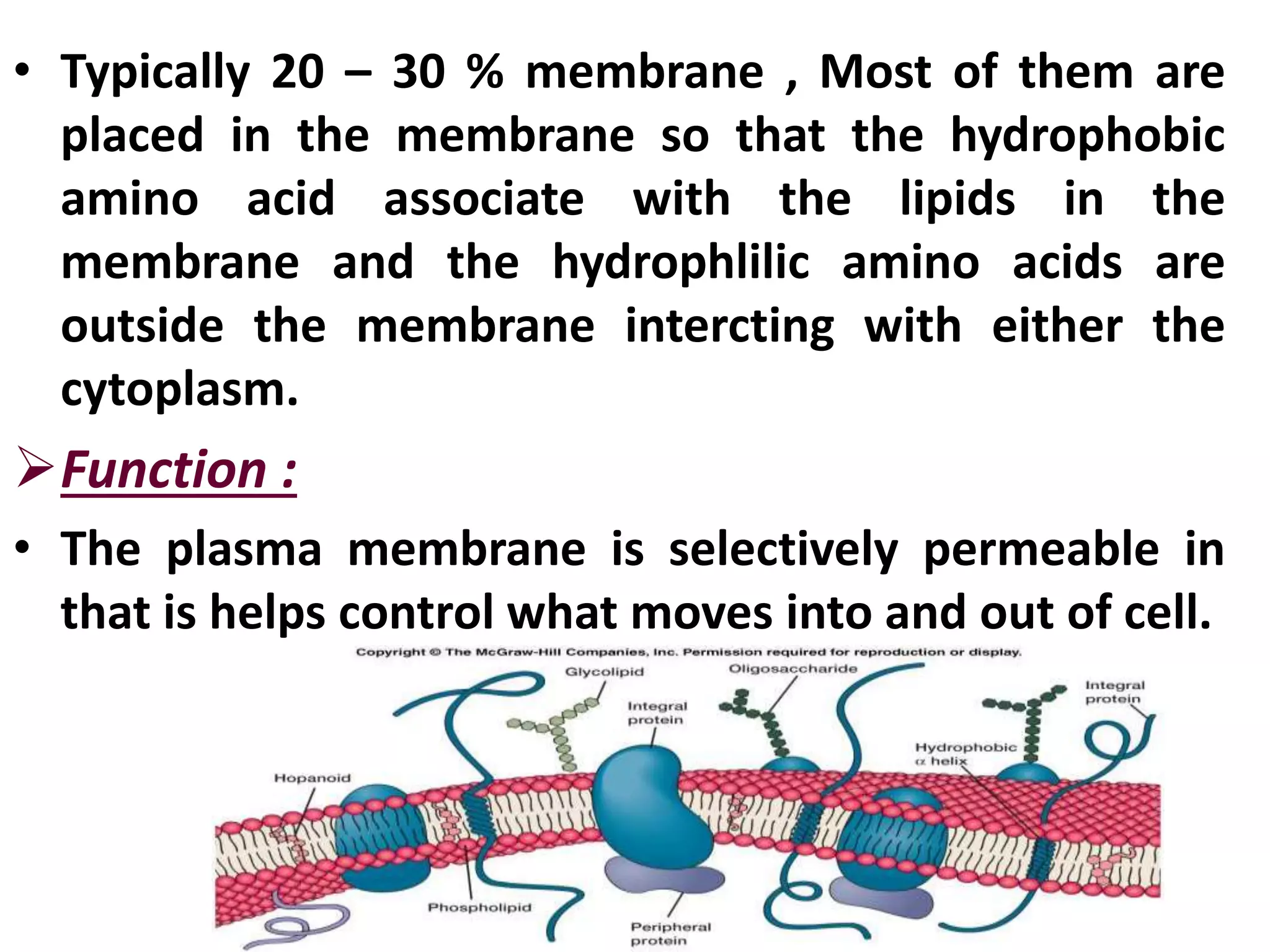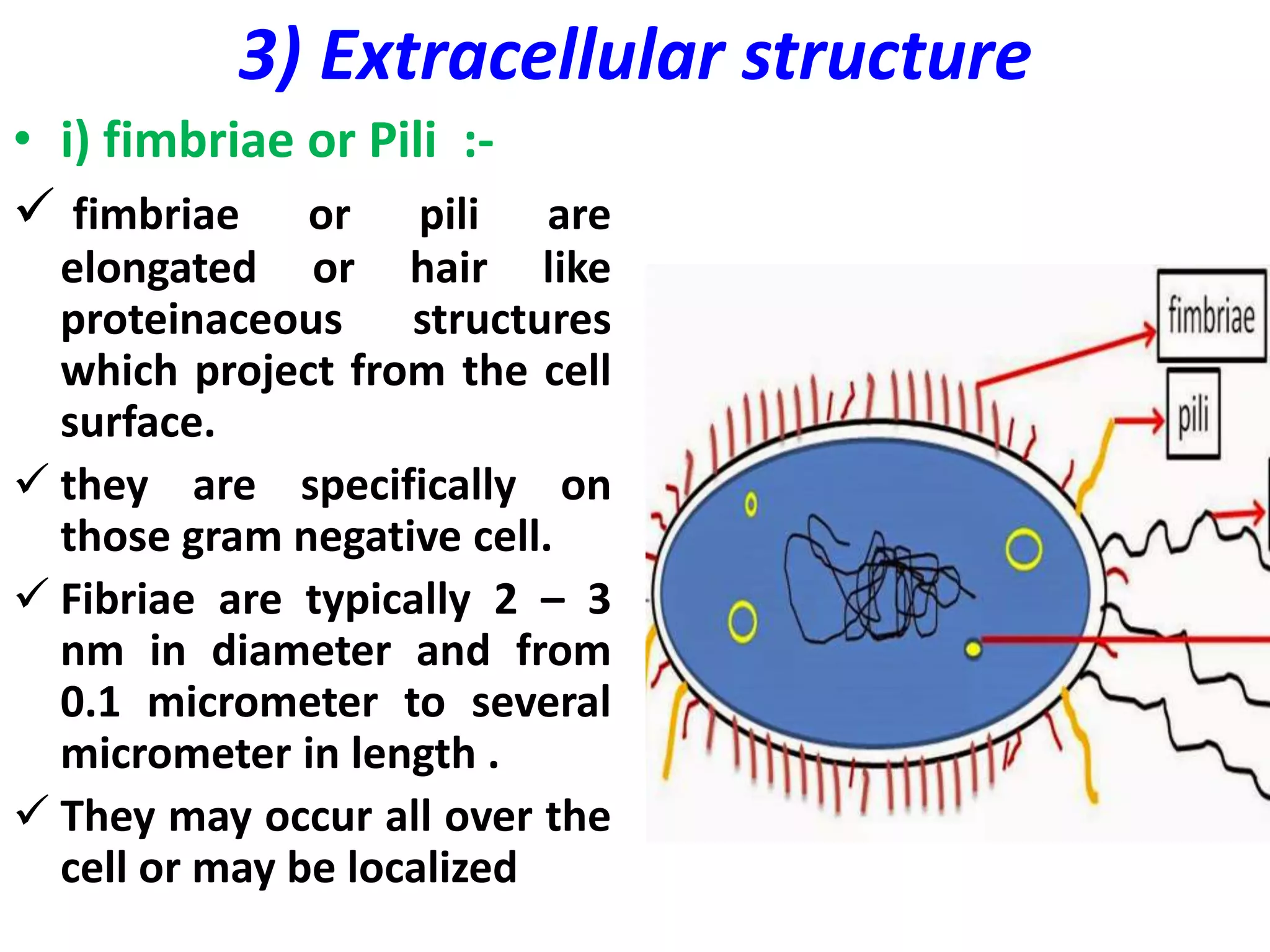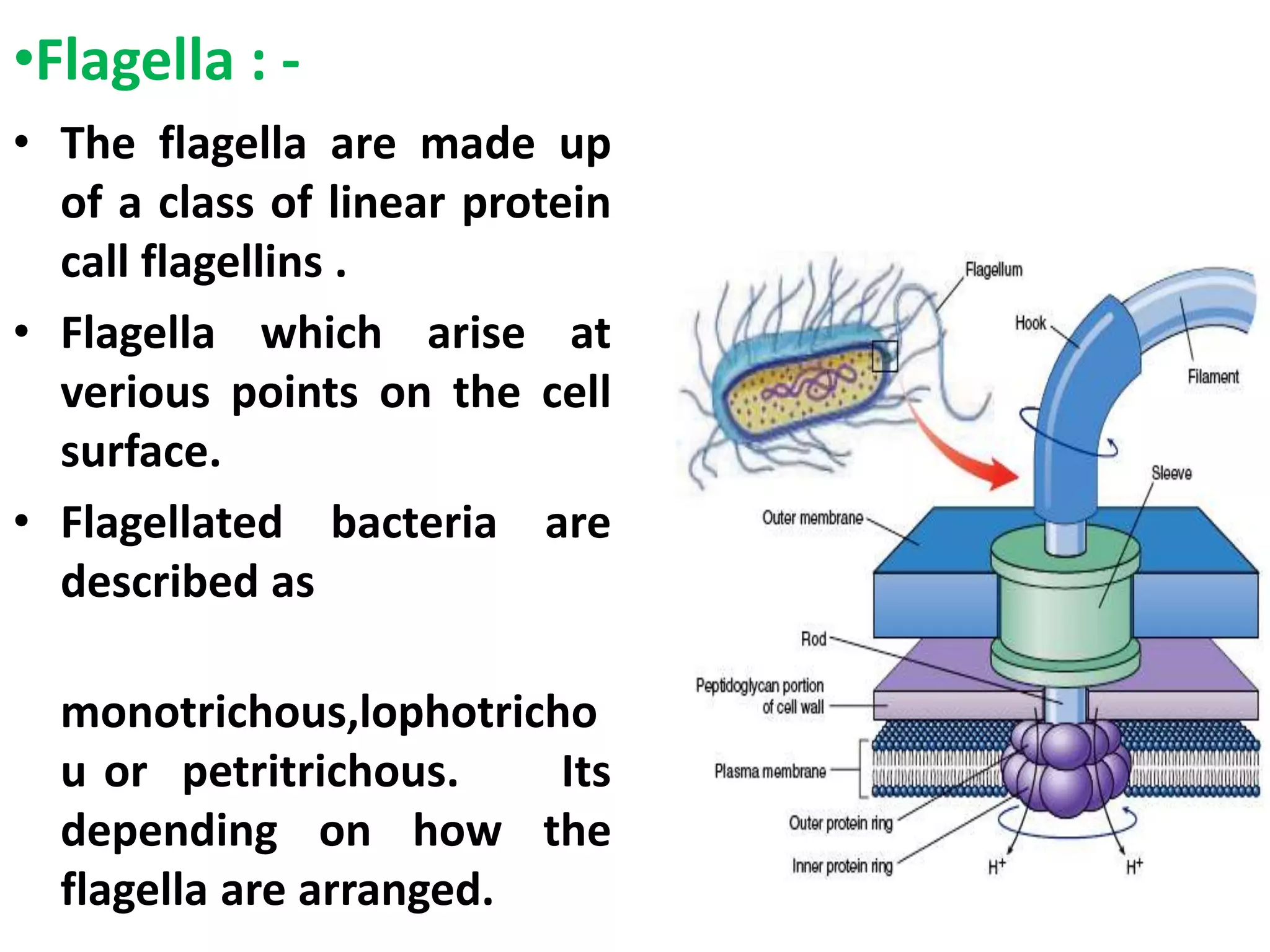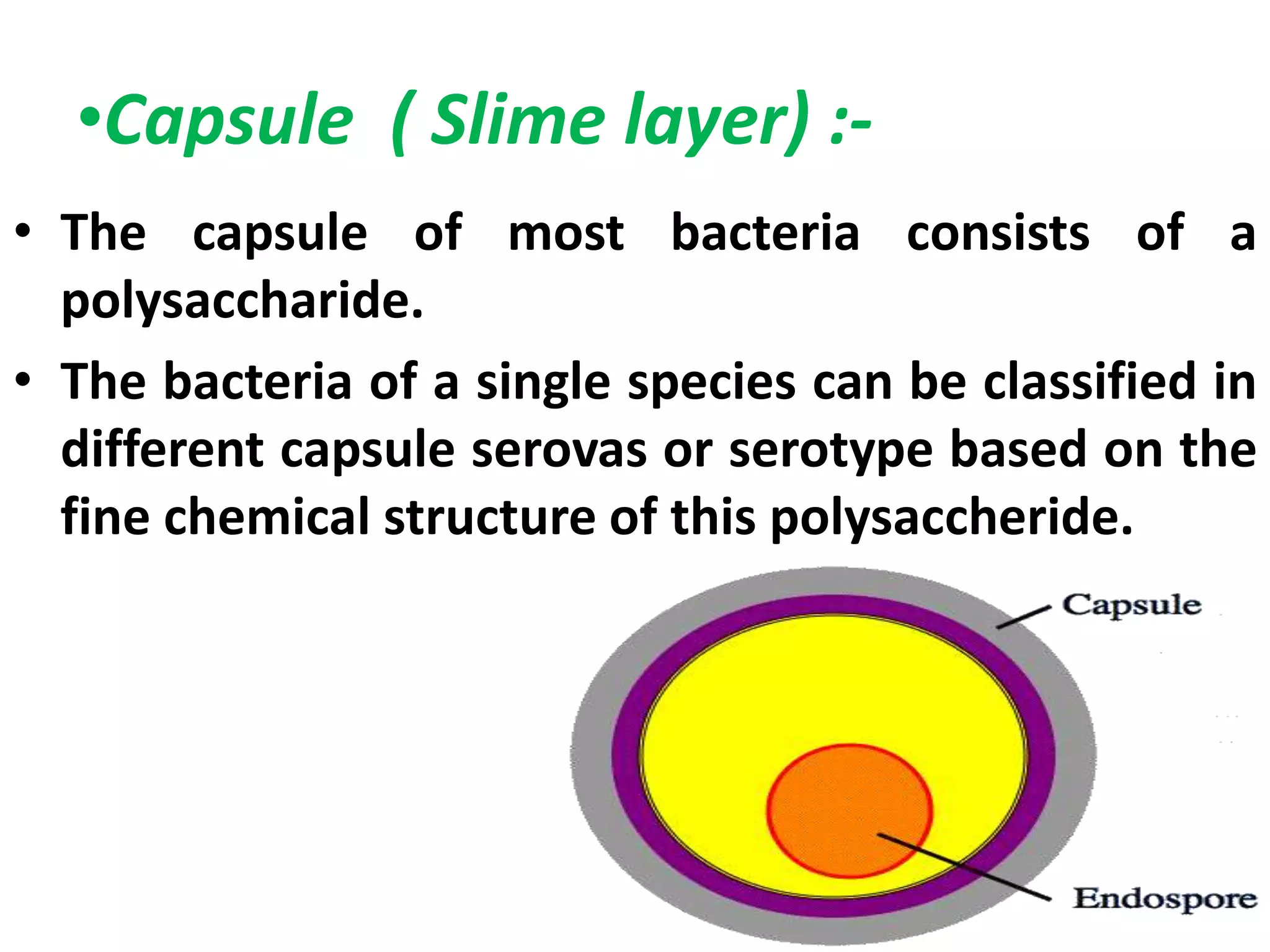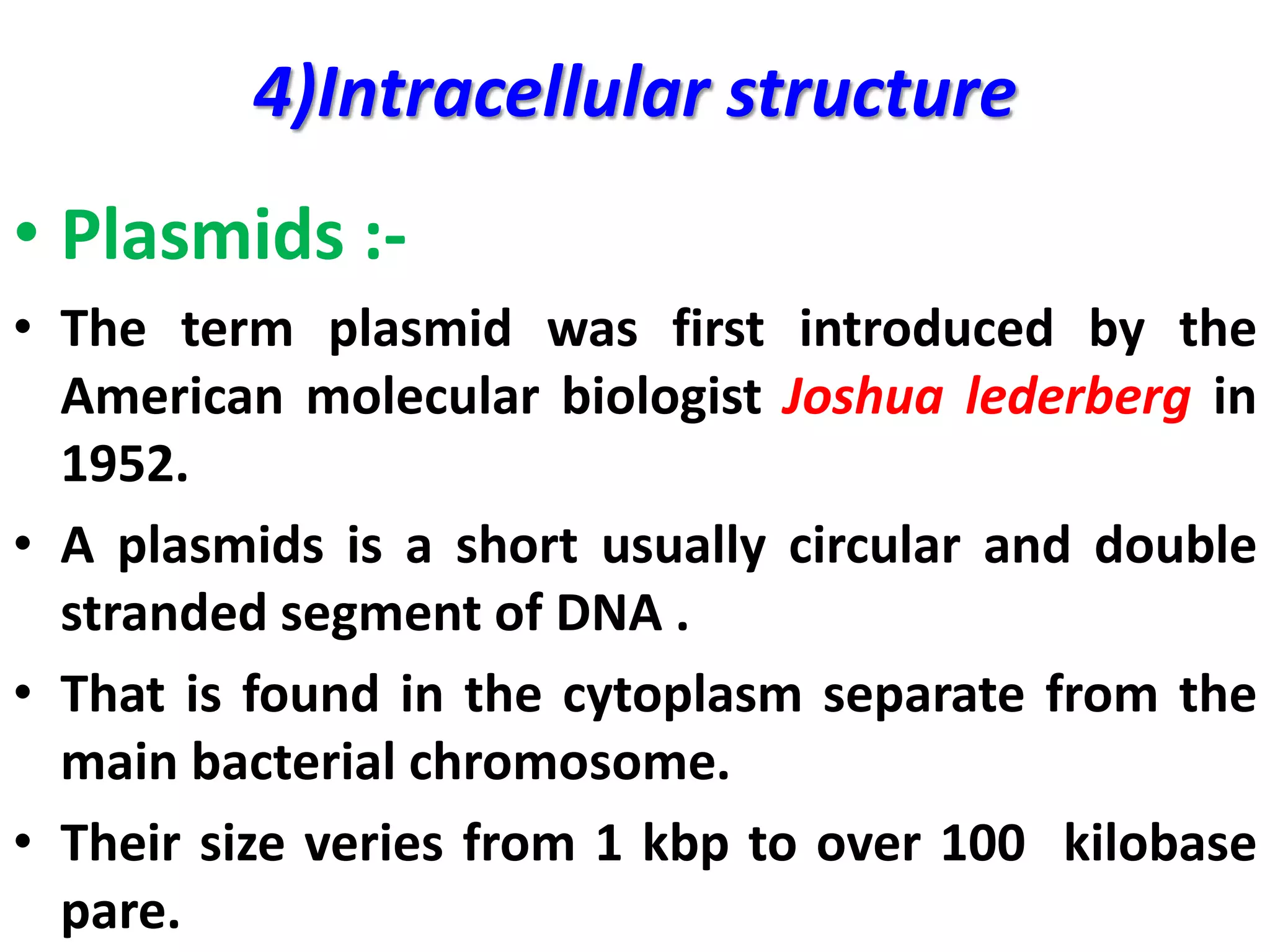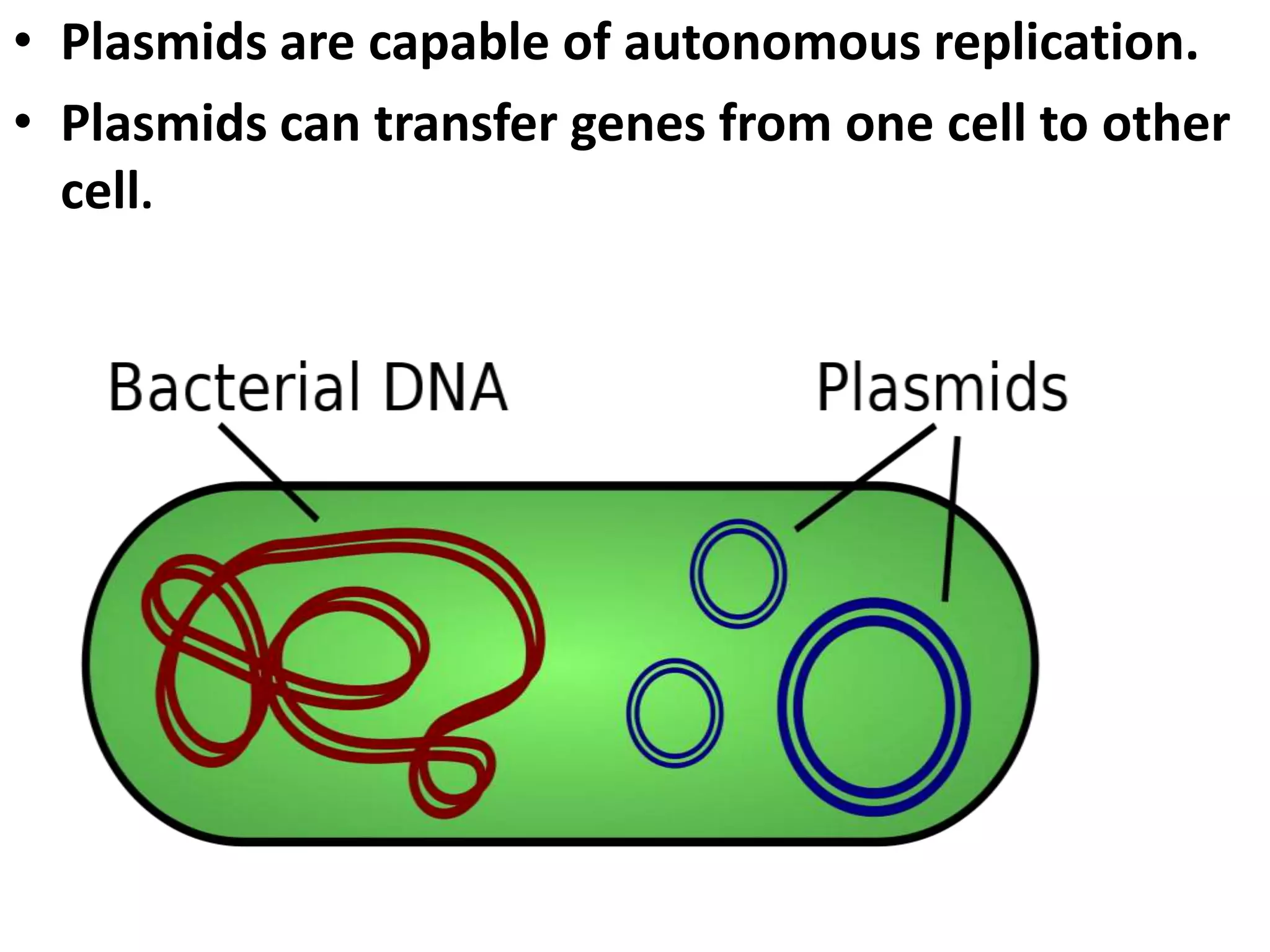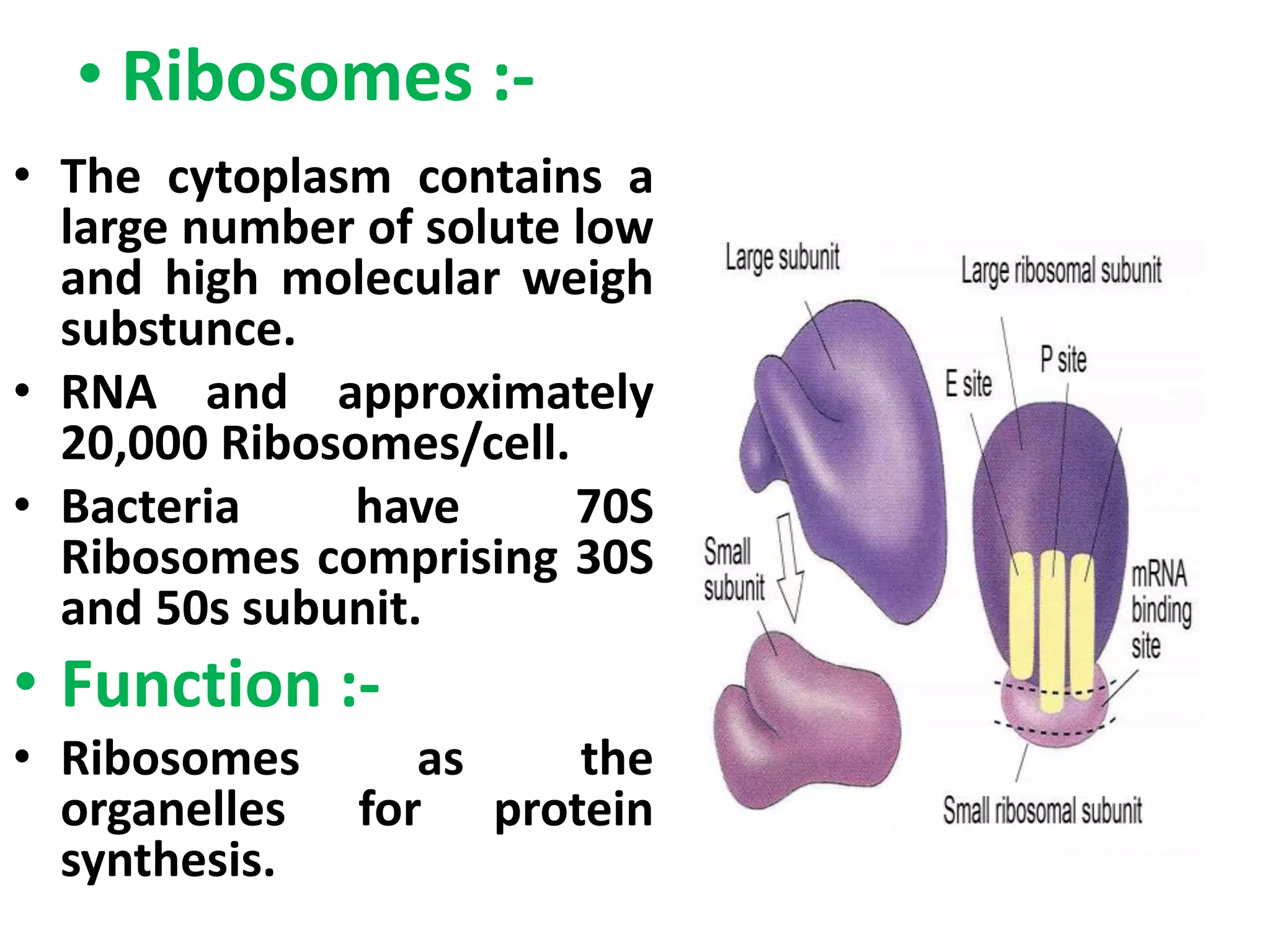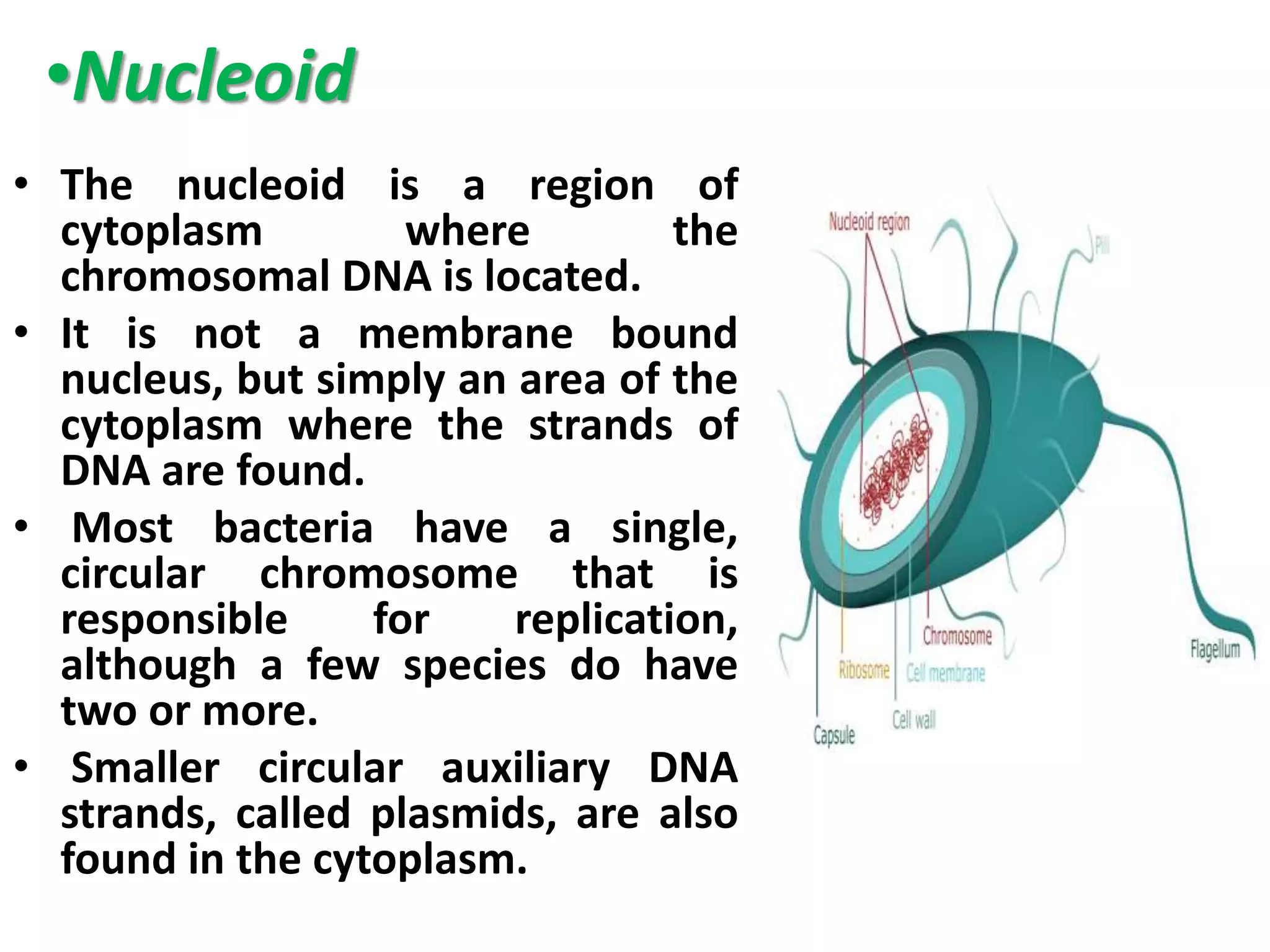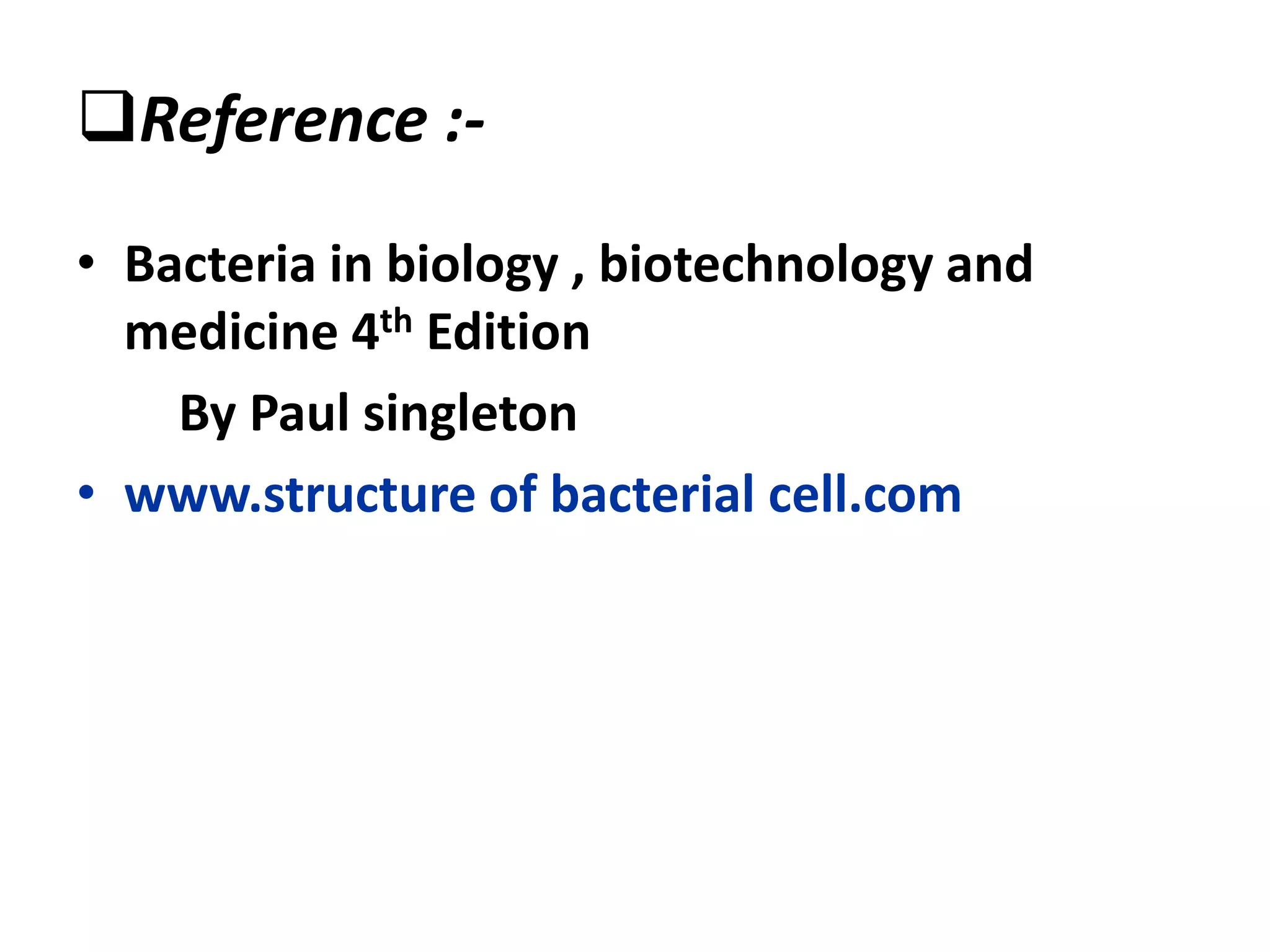This document summarizes the structure of bacterial cells. It describes the key components including the cell wall, plasma membrane, and intracellular and extracellular structures. The cell wall differs between gram-positive and gram-negative bacteria. Gram-positive walls are thicker and contain higher amounts of peptidoglycan while gram-negative walls are thinner and contain an outer lipopolysaccharide membrane. Intracellular structures discussed include plasmids, ribosomes, and the nucleoid region containing DNA. Extracellular structures include fimbriae, flagella, and capsules.
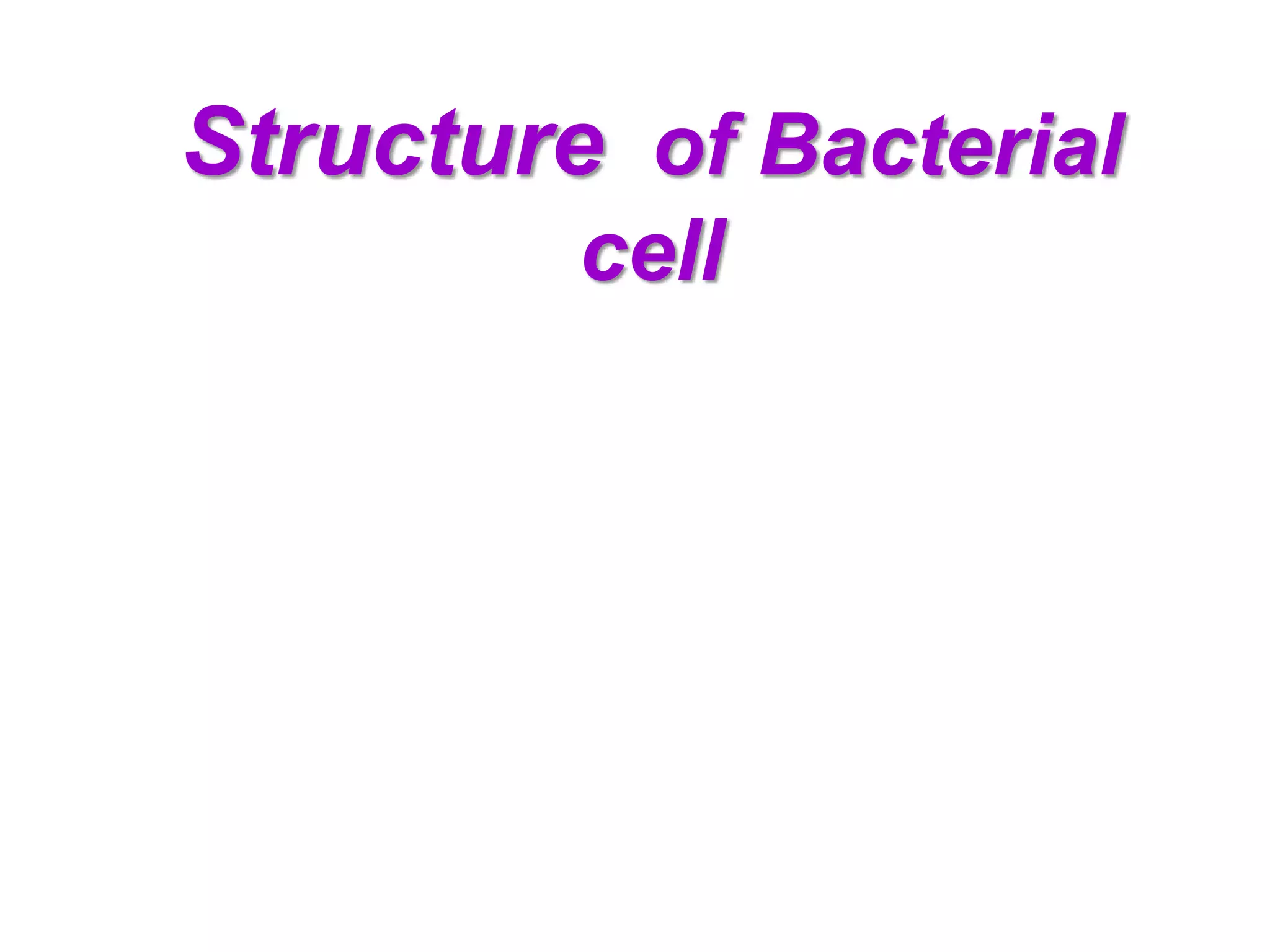
![Content
• Introduction
• Cell Morphology
• Structure of bacterial cell
1] Cell Wall
2] Plasma membrane
3] Extracellular (external ) structure
4] Intracellular ( Internal) structure](https://image.slidesharecdn.com/structureofbacterialcell-1808061815031-230124110331-b919e9a4/75/structureofbacterialcell-180806181503-1-pdf-2-2048.jpg)
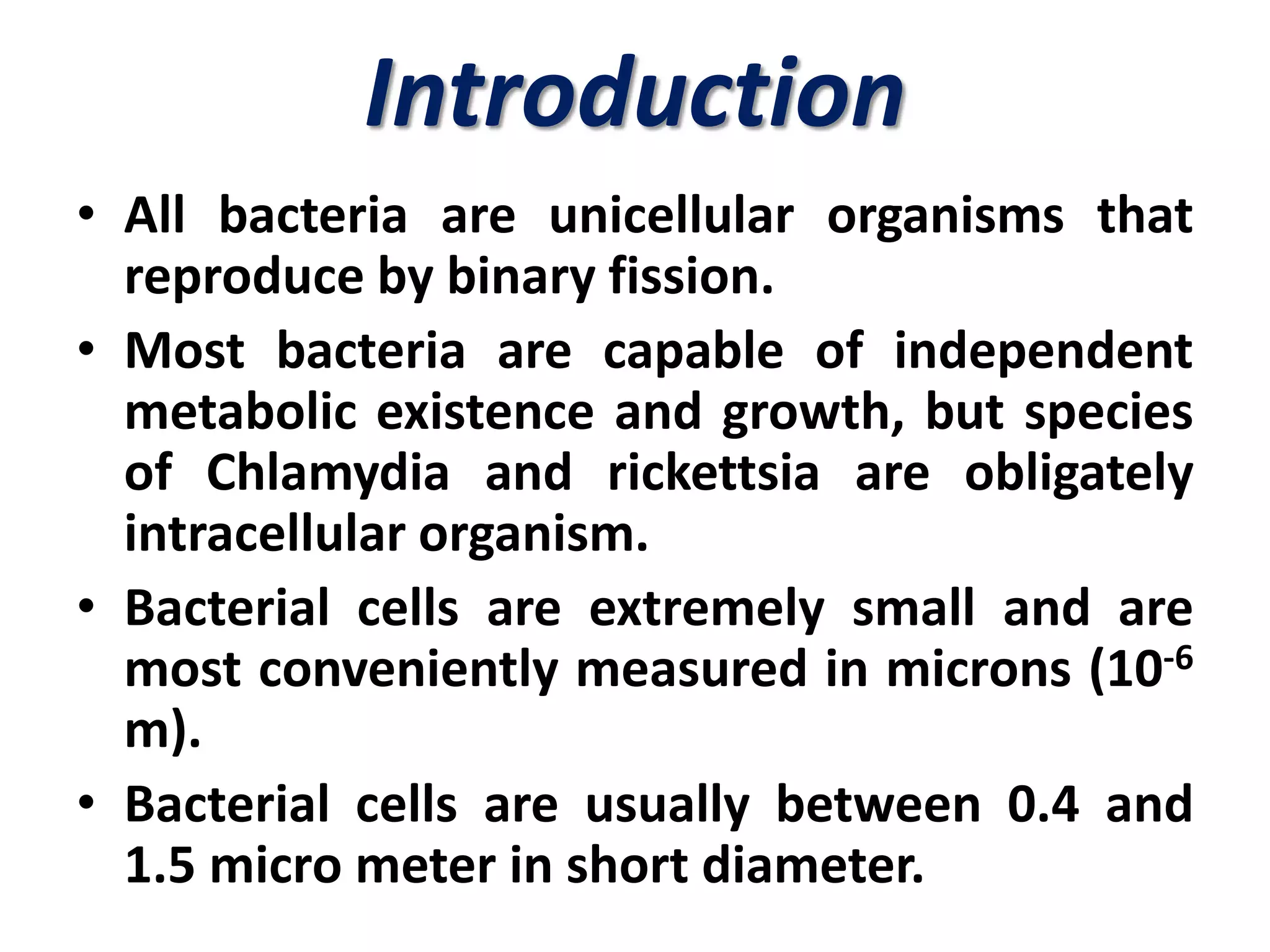
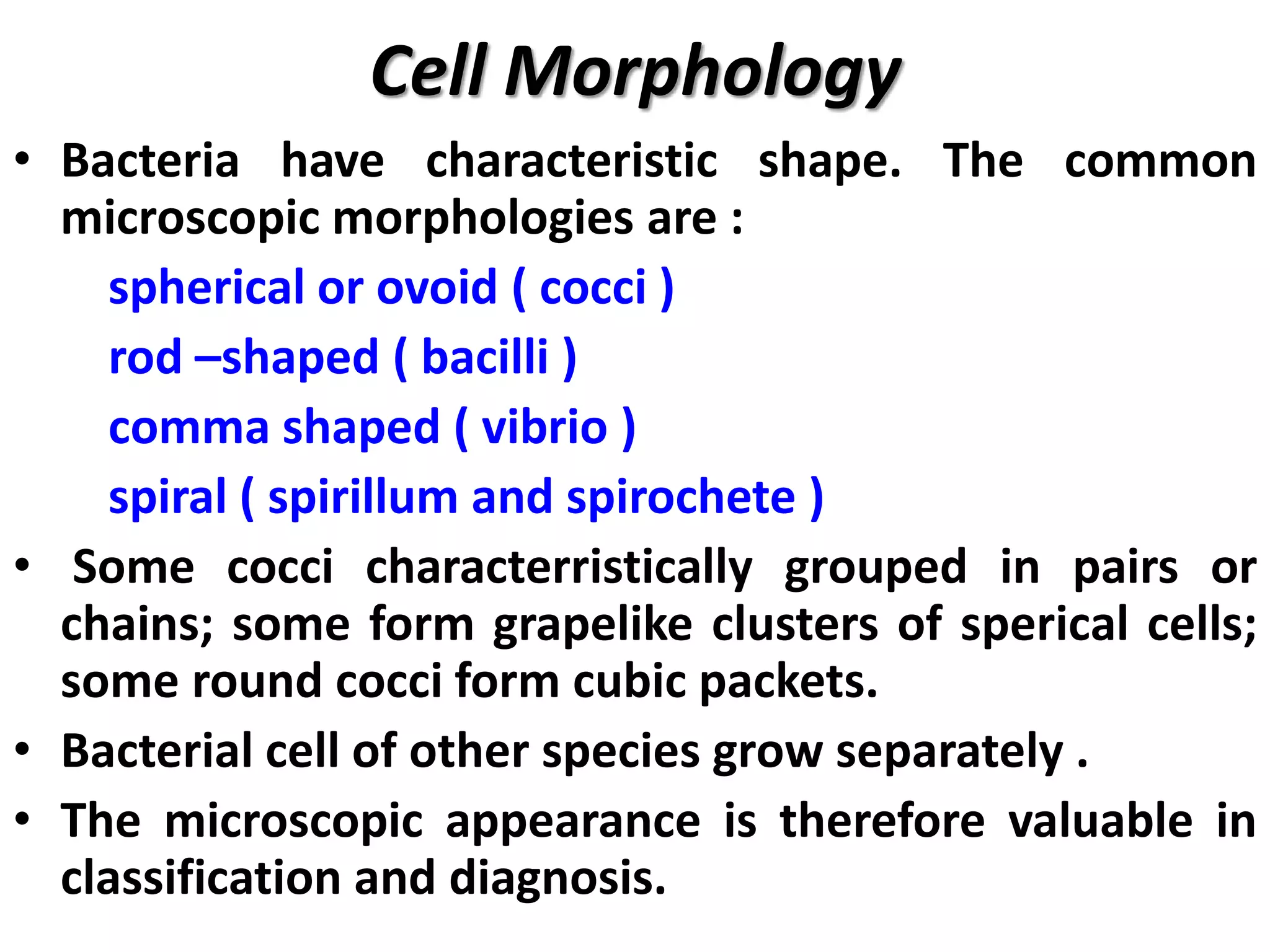
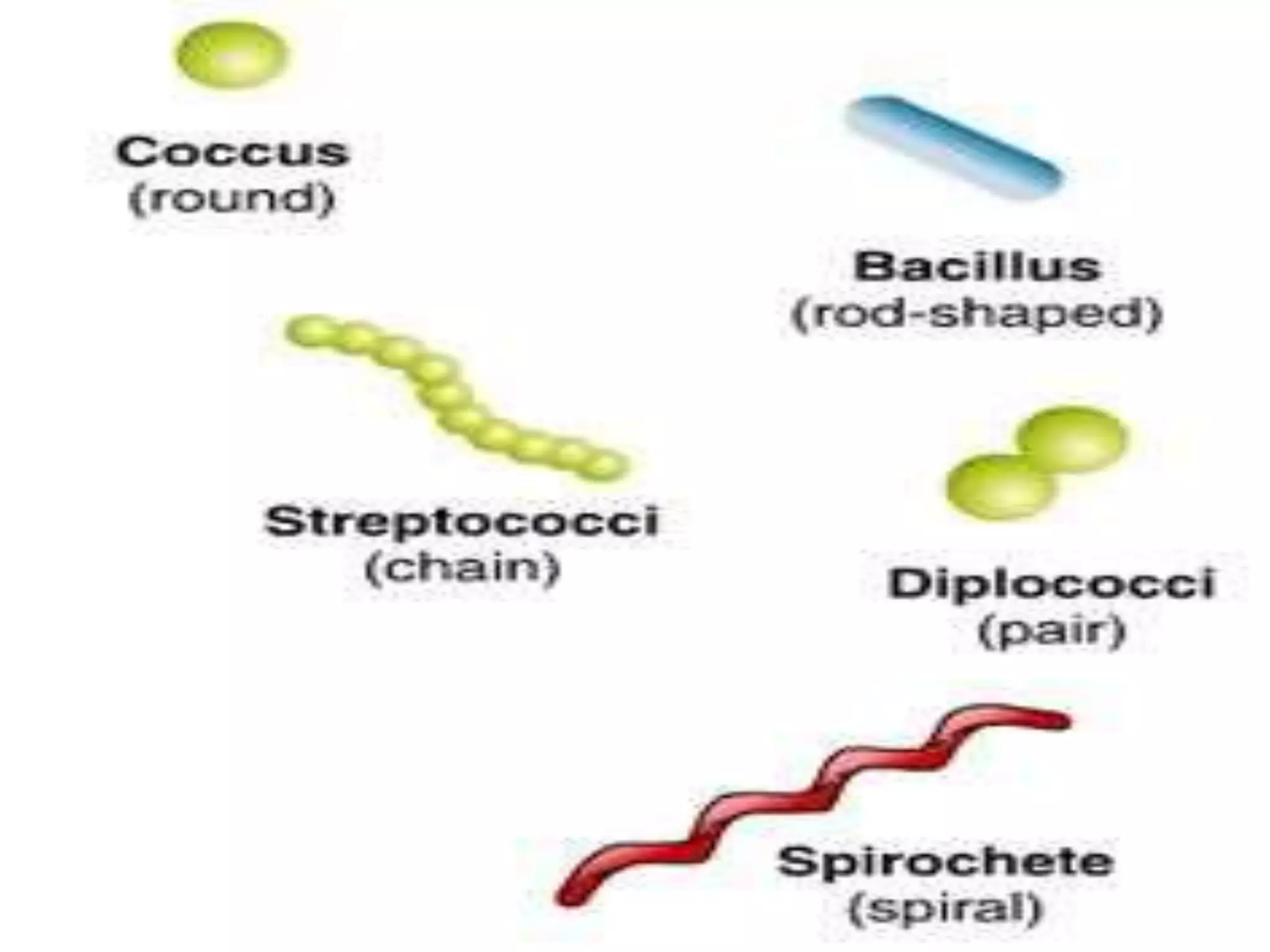
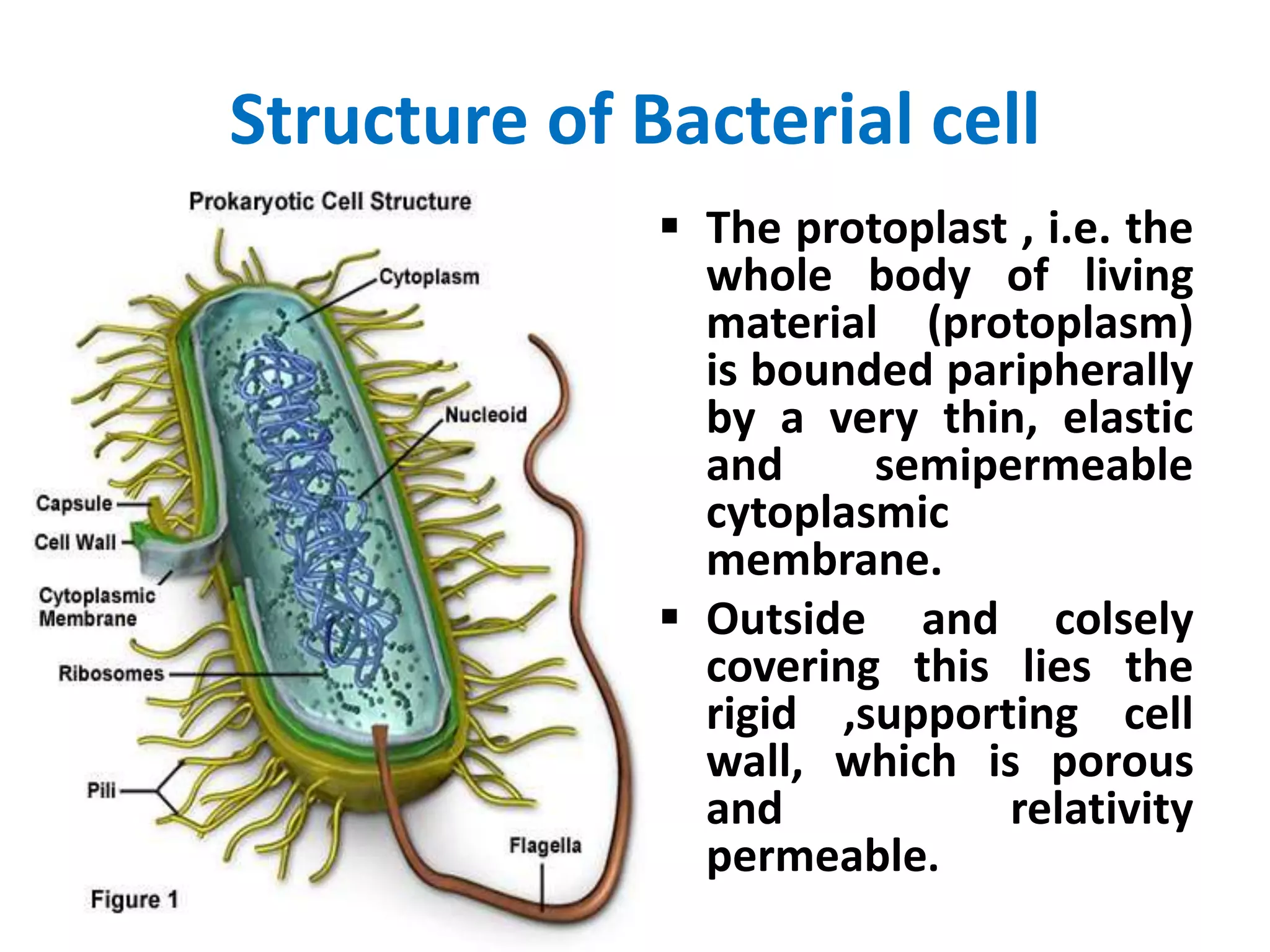
![1] cell wall
The cell wall encases the protoplast and lies
immediately external to the cytoplasmic
membrane.
It is 10-25 nm thick, strong and relatively rigid,
though with some elasticity and openly porous ,
being freely permeable to solute molecules
smaller then 10 kDa in mass and 1 nm in diameter
It shows granular structure and lacks microfibrils.
Gram Positive and Gram negative bacteria have
different type of bacterial cell wall](https://image.slidesharecdn.com/structureofbacterialcell-1808061815031-230124110331-b919e9a4/75/structureofbacterialcell-180806181503-1-pdf-7-2048.jpg)
